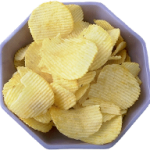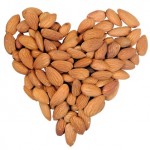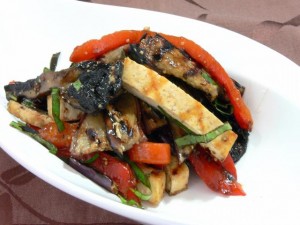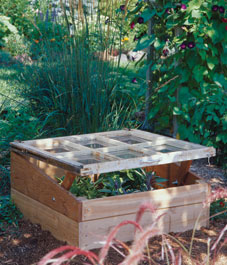Archive for the ‘Articles’ Category
Put Family First – Eat Together
November 05 2012

We live in a hectic time.
For parents with young children, it can be very stressful rushing to after-school activities, often stopping to quickly grab a fast meal somewhere on the road. Home cooking has become an uncommon occurrence in millions of American kitchens now that grocery store shelves are packed with convenience meals, and kids crave the junk food that fast food companies directly market to them.
Families spend less time eating together than they did a generation ago. According to a national poll conducted by RGA Communications in 1995, only one-third of U.S. families said they “usually have their evening meal together on a daily basis”. Continue reading
Confessions of a Chipaholic
September 14 2012
Hello, my name is Paul and I’m a chipaholic.
For years I have indulged in ½ a bag a day habit. I would sit in front of the TV and crunch my way through a bag of BBQ chips like it was nothing. We’re talking about the big bags here…200g. I often didn’t even realize I was doing it. I’d awake from my TV induced haze to find my chest covered in chip crumbs, an empty bag on the floor next to the couch.
 Breaking this habit was hard, I kid you not. The first step was simple yet so tough…don’t buy any chips. As long as they aren’t in the house, I will not eat them. If I know that there’s a bag in here somewhere, I will find it and I will eat it…all of it!
Breaking this habit was hard, I kid you not. The first step was simple yet so tough…don’t buy any chips. As long as they aren’t in the house, I will not eat them. If I know that there’s a bag in here somewhere, I will find it and I will eat it…all of it!
So step one: never buy chips. It’s been hard. I have broken this rule a few times and recently, after about 2 years of only buying and eating chips occasionally, I have found that I no longer can consume a 1/2 bag or more in one sitting. I feel kind of ill after eating just a few. The same goes for pop.
Trust me, I still have those night time cravings but I’ve tried to replace them with other healthier snack foods. We now try to have a container of carrot sticks in our fridge at all times; simple and convenient. We try to make dips such as hummus and red pepper dip. We make kale chips and eat unsalted popcorn instead of potato chips.
It’s that time of year
August 23 2012
Summer is coming to an end and that means that the school year is about to begin.
 If you have school aged children, then you’re already fretting about school lunches. What do you make that’s healthy, nutritious and that they’ll actually eat. The last bit is sometimes the hardest.
If you have school aged children, then you’re already fretting about school lunches. What do you make that’s healthy, nutritious and that they’ll actually eat. The last bit is sometimes the hardest.
This article brings up an excellent point: “If you want them to eat it, don’t pack the stuff they don’t like,” says Joanne Saab, a registered dietitian who works in pediatric nutrition at McMaster Children’s Hospital in Hamilton. “They will not eat it if you’re not there.”
I’m a big fan of leftovers for lunches; there’s nothing easier than packing up what’s left from last night’s dinner. But I do understand that for a lot of kids leftovers just don’t cut it. The MealEasy meal planner has many simple, nutritious and kid friendly lunch suggestions; everything from sandwiches to pasta salads to soups.
Try out some new ideas for lunches before the kids head back to school, either as a meal at home or as small samples to see if your kids might enjoy these items in their lunches. And remember to include some fruit and some vegetables in the lunch…and most importantly, if they’re not going to eat it then don’t give it to them.
Eggs and Chocolate
August 17 2012
Three recent food related articles caught our attention this week.
 The first article was about the harmful effect of eating egg yolks; in fact, the researcher “claims the cholesterol found in the yolk is almost as dangerous as smoking.” WOW! That’s bad news for those of us who enjoy eggs on a regular basis.
The first article was about the harmful effect of eating egg yolks; in fact, the researcher “claims the cholesterol found in the yolk is almost as dangerous as smoking.” WOW! That’s bad news for those of us who enjoy eggs on a regular basis.
But then, a second article disputes these claims:
“But Dr. Antonis Zampelos, a professor of human nutrition and the journal’s expert on dietary matters, said Spence should have also tracked the intake of saturated fat, which is a proven cause of coronary disease.
“The results are not as strong as the statement that came out,” said Zampelos.
“The results lack the greatest validity I would say. I’m not saying that this is not an interesting study,” he said. “I’m saying that you can’t really make such a strong statement about smoking.””
So who do we believe? Food science and nutrition is constantly evolving; what is good for us today can be found to be bad for us tomorrow. Food items such as margarine, artificial sweeteners and wheat are either a healthier way to eat or harmful to us depending on whom you believe.
Also this week, researchers found that dark chocolate can help lower you blood pressure. Now this is news I choose to believe.
 Dark Chocolate: A study published in the March 2007 issue of the American Journal of Clinical Nutrition found that of more than 34,000 post-menopausal women who consumed the most flavonoid-rich food, 22 per cent had a lower risk of developing coronary heart disease. Chocolate was ranked as one of the top flavonoid-rich foods associated with a protective effect, along with bran, red wine, grapefruit and strawberries.
Dark Chocolate: A study published in the March 2007 issue of the American Journal of Clinical Nutrition found that of more than 34,000 post-menopausal women who consumed the most flavonoid-rich food, 22 per cent had a lower risk of developing coronary heart disease. Chocolate was ranked as one of the top flavonoid-rich foods associated with a protective effect, along with bran, red wine, grapefruit and strawberries.
These findings support previous research published in 2006 in the Archive of Internal Medicine, which found men who consumed high amounts of cocoa products (2.3 grams or more per day) had a 50% lower risk of developing cardiovascular disease, compared with men with the lowest consumption.
A study two years earlier, published in the journal Hypertension, uncovered similar findings using more chocolate. Researchers randomly assigned 20 subjects with high blood pressure to receive either 100 grams a day of flavonoid-rich dark chocolate or 90 grams per day of flavonoid-free white chocolate. The group receiving dark chocolate experienced a drop in blood pressure. Researchers also found that levels of LDL cholesterol dropped by 10 % in the dark chocolate group.
Your heart health isn’t the only thing with a link to chocolate. A 2007 study published in the European Journal of Clinical Nutrition found that men who preferred chocolate to other types of candy had a lower body mass index and waist circumference than men who did not eat chocolate. Chocolate lovers also experienced more feelings of happiness and better psychological well-being.
Whomever you choose to believe, eating foods, be it eggs or chocolate, moderation is the key. There is such a thing as too much chocolate.
AHWW Nuts!
July 26 2012
Did you know that eating almonds can lower you LDL and reduce your risk of heart disease?
It’s true. Did you know that they can also help you lose weight? Yes, true again. Substituting almonds for less healthy foods can have the duel effect of lowering your risk of heart disease and helping you lose weight.
 Almonds are incredibly versatile as well. Eaten whole, they’re great as a snack; they’re wonderful in salads and cereals; and great in baked goods and breads. Did I mention they taste wonderful too? Next time you’re reaching for a bag of chips or a chocolate bar as a snack, try a handful of almonds instead, they’ll fill you up, they taste great and they’re good for you!
Almonds are incredibly versatile as well. Eaten whole, they’re great as a snack; they’re wonderful in salads and cereals; and great in baked goods and breads. Did I mention they taste wonderful too? Next time you’re reaching for a bag of chips or a chocolate bar as a snack, try a handful of almonds instead, they’ll fill you up, they taste great and they’re good for you!
Here are some facts about almonds:
Almonds are a great source of vitamin E, with 25g providing 70 percent of the recommended daily allowance. They also have good amounts of magnesium, potassium, zinc, iron, fiber and are a good source of healthy monounsaturated fat. They contain more calcium than any other nut which makes them great for vegetarians who do not eat any dairy products.
They also contain amygdalin, also known as laetrile or vitamin B17, the anti-cancer nutrient. Almonds also contain several phytochemicals which are thought to contribute to a healthy heart. A handful of almonds a day help reduce the risk of heart disease by lowering ‘bad’ blood cholesterol (LDL) by as much as ten percent.
Almonds are high in monounsaturated fat, a key fat found in many Mediterranean diets, and which gives them much greater benefits than simply being cholesterol-lowering. Nearly every research study shows those who eat a traditional Mediterranean diet not only have a lower risk of heart disease and cancer, they also live longer.
For many years almonds were considered ‘fattening’. However, studies have shown that those who ate the most nuts tended to have lower body mass indexes. Although almonds are high in fat and calories, eating them in moderation can actually help with weight loss.
Almonds are high in protein, around 18 percent, and contain virtually no carbohydrates, they are ideal for diabetics, pre-diabetics or anyone with blood sugar issues.
In traditional Chinese medicine, almonds are considered anti-inflammatory, anti-spasmodic and are used as a tonic. They are also known as brain and bone food, probably due to their high calcium content.
Check out MealEasy.com for many interesting recipes and meals using almonds.
It’s in the bag!
July 11 2012
A recent survey by Visa Canada found that a whopping 60% of Canadians buy their lunch at least once a week.
This amount may be the same across North America. So, you might think the buying your lunch once a week is not so bad, heck, you may even splurge and buy lunches more than once a week; what’s $20 here or there.
 The same survey found that the average person spends between $7 and $13 dollars on lunch and sometimes even as much as $25! That may not sound like a lot but when you multiply that by 52 weeks (52 weeks X $13 = $676) you get almost $700!!! That’s a big chunk of change.
The same survey found that the average person spends between $7 and $13 dollars on lunch and sometimes even as much as $25! That may not sound like a lot but when you multiply that by 52 weeks (52 weeks X $13 = $676) you get almost $700!!! That’s a big chunk of change.
Now what if your spouse is doing the same? There’s another $700. Hey, don’t we give the kids money for lunch once a week too? That’s 2 kids and maybe a little less cash; let’s say $7…which would add up to another $700…next thing you know, you’ve spent over $2000 a year on restaurant lunches!
Looking over our meal facts, you’ll find that the average cost per portion of MealEasy’s complete meals will come out to be about $2.06 per portion! That’s a huge savings and all you did was bring your lunch from home.
I know what you’re saying: “but I don’t have time to make my lunch in the mornings”. I’ve got one word for you…leftovers! I know, I’ve preached about the advantages of leftovers here before but that’s because it just makes sense both financially and from health and nutrition perspective. What’s better than a meal where you know what all the ingredients are and how much fat and calories it contains?
This week, I made quinoa salad to go with my pork chop which I grilled for dinner on Sunday night. I made lots of quinoa so I could have some for lunches for at least half of the week. It doesn’t get boring because last night for dinner I cooked some green and yellow beans as side vegetables. A coked extra and then added them to the quinoa salad. Tonight, I’ll add some leftover zucchini…it makes for a different salad everyday with minimal effort.
The MealEasy Meal Planner allows you to choose how many portions of a dish you want to make and them scales the recipe accordingly; it also adjust the grocery list so you have everything you need. We also conveniently tell you which meals are freezable so you can make extras and keep them for lunches down the road.
It only makes sense. Why spend $700 a year that you don’t have to? Brown bag it…it’s the way to go.
Kid Friendly
July 04 2012
We get asked all the time here at MealEasy about what we have for “kid friendly” meals?
It’s a tough question. In a perfect world I’d love to say that all our meals are “kid friendly” but I know kids are sometimes hard to please. Of course, not every kid eats the same things. Some prefer salads to French fries as young Lev here can attest to. Some kids, such as my daughter, prefer quinoa to mashed potatoes.

So what is “kid friendly” food? Food shaped like animals? Food that is deep fried and overly salted (fast foods)? If that’s the kind of thing that you consider “kid friendly” then I would have to say that, no, we do not have anything that is deep fried or animal shaped.
What we do have are healthy balanced meals made from fresh ingredients and packed with a nutritional punch and not with sugar. Kids don’t need sugar laden soft drinks or salt rich French fries, they need healthy foods that help them keep their energy high and improve their mental strength…and that’s what we offer here at MealEasy.
Browse through the over 2000 meals available and you’ll find family favorites such as “sloppy Joes”, spaghetti and meatballs, grill cheese sandwiches and even “mac and cheese”; but you’ll also find Vegetarian sloppy Joes, spaghetti and white bean balls and mac and cheese with broccoli and made from whole wheat pasta. We’ve got chicken fingers, fish sticks and a selection of burger recipes; some vegetarian others with meat. Kids enjoy colorful and exciting foods especially at a young age. If you get them eating healthy and nutritious foods at home now, they are much more likely to continue making healthy food choices as they get older.
Try something new, your kids may surprise you.
Summertime, and the cooking’s easy
June 21 2012
 What can be easier than barbecuing? Sure, if you’re using a charcoal grill it takes a bit of time to set up but think of all the time you save by not having to wash pots and pans. I love to BBQ any chance I get during the spring and summer months. I love any excuse to get outside really.
What can be easier than barbecuing? Sure, if you’re using a charcoal grill it takes a bit of time to set up but think of all the time you save by not having to wash pots and pans. I love to BBQ any chance I get during the spring and summer months. I love any excuse to get outside really.
One of the benefits of barbecuing is that you use less oil than when cooking on the stove. But remember, grilling doesn’t have to be only meat.
I love putting asparagus, sweet potatoes, bell peppers and even fennel slices on the grill (especially with fish) as well as burgers or chicken.
At MealEasy we also have quite a few recipes that feature grilled tofu…and trust me, they are yummy!
So, get outside and start grilling; you get sunshine, great tasting food and no pots to clean.
Visit MealEasy.com for details.
The Revolution Has Begun!
June 06 2012
I was struck this weekend by how many of my neighbors have taken up gardening. The home next door to our house is divided up into three separate apartments and two of these apartments have seen new tenants arrive in the last few months. And since the weather has improved, all of these new residents have started growing their own food.
Their backyard is very small; in fact I’d say it’s no more than 20m square. The folks on the main floor have still managed to plant kale in containers, beans and peas along the side of the house as well as tomato plants and various lettuces in a converted wooden skid.

The couple that live on the second floor have tomatoes, lettuces, spinach and cucumbers growing from their second floor balcony! Even the First Lady Michele Obama is getting in on the act by publishing a gardening book: American Grown.
At our house, thanks to the wonderful book: The Year-Round Vegetable Gardener we’ve learned all about “cold frames” which have extended our growing season by a lot. In fact, we’re already eating lettuces, radishes and spinach from our garden and have been for a few weeks now. This is unheard of in Nova Scotia unless you have a green house or other.
What this tells me is that more and more people are getting into gardening and thinking about where their food comes from. What my neighbours are proving is that you don’t need a lot of space, or heck, even a backyard, to grow your own food. The more we take food production and food preparation into our own hands, the healthier we’ll all be.
By cooking at home and growing even a little of your own food, you can escape the clutches of the greedy corporations… and eat healthier as well.
In Praise of Slowness
May 30 2012

Did you know that you are three times as likely to be overweight if you eat too fast? Eating in a hurry has been proven to lead to all kinds of health issues as well as weight gain. Conversely, the slower you eat the fewer calories you ingest.
Eating quickly is a tough habit to break. I know because for years I was a speed eater. Working in restaurants you regularly scarf down as much as quickly as you can because you’re never sure when you’ll get a break to eat again. And, as a kid, I couldn’t wait to get outside to play so eating fast was a bad habit I grew up with.
There are steps you can take to slow down your eating habits and by extension prevent unwanted weight gain:
• Don’t wait too long between meals/snacks Try not to go more than 3 to 4 hours without eating something. Try snacks such as yogurt or fruit between main meals.
• Drink more water Have a glass of water before and during each meal; this will help you fill up your belly. Also, having a sip of water between bites will help you slow down your eating habits.
• Cut your food into smaller bites and chew chew chew Smaller pieces of food chewed thoroughly will again help with slowing down. One study showed weight loss success by chewing 20 to 30 times before the next bite. Also, chewing food thoroughly leads to better digestion as well.
• Know when to stop This is the hardest part, especially when what you’re eating is really yummy. The trick is to stop eating before you fell full. This will take some practice but learning when to stop eating is the most important thing when it comes to weight loss.
• Portion control We preach about this one a lot at MealEasy because we believe it is one of the most important and easiest ways to not overeat and therefore lose weight. Stick to your portion size.
